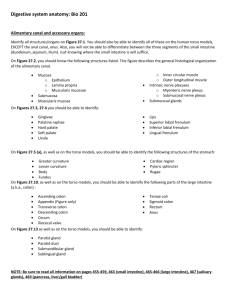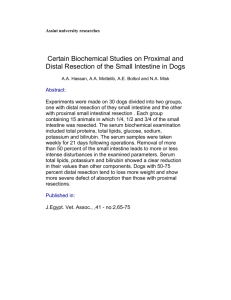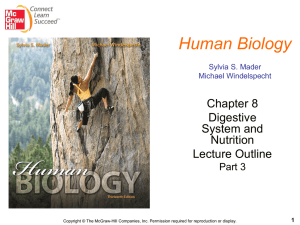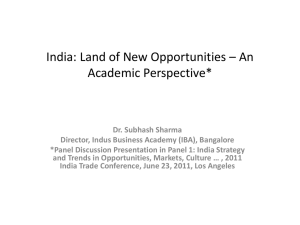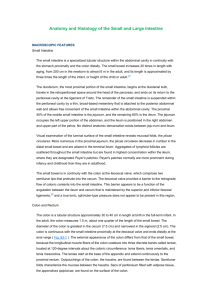NEWS RELEASE Media Contact: Ellin Kavanagh Office: (323) 361
advertisement
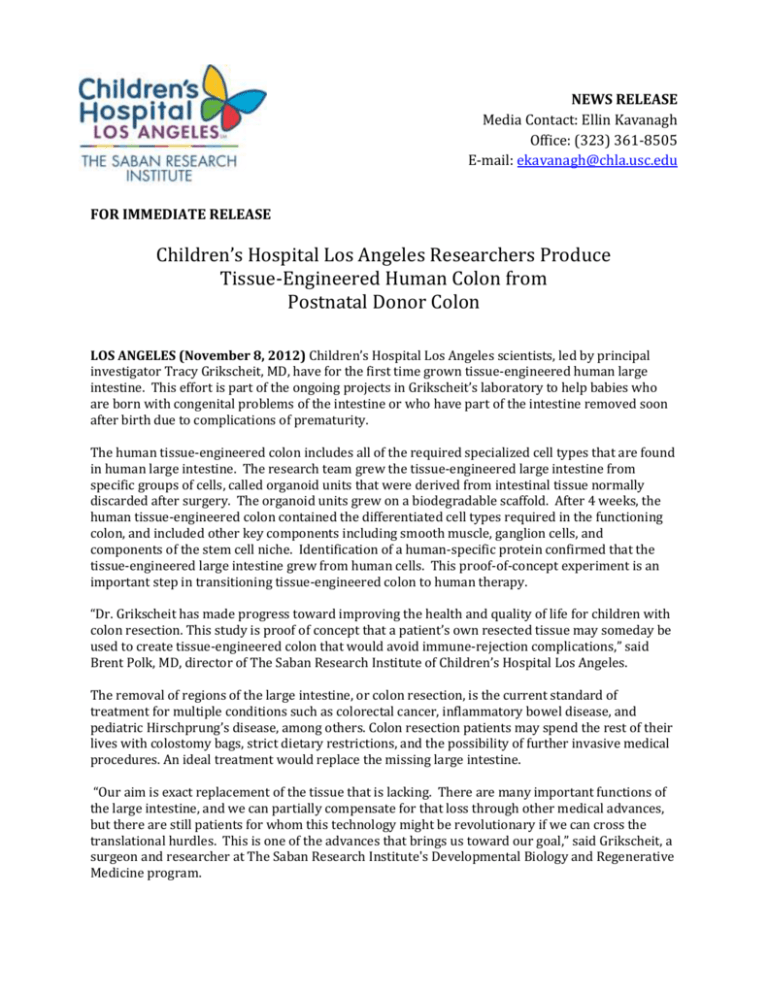
NEWS RELEASE Media Contact: Ellin Kavanagh Office: (323) 361-8505 E-mail: ekavanagh@chla.usc.edu FOR IMMEDIATE RELEASE Children’s Hospital Los Angeles Researchers Produce Tissue-Engineered Human Colon from Postnatal Donor Colon LOS ANGELES (November 8, 2012) Children’s Hospital Los Angeles scientists, led by principal investigator Tracy Grikscheit, MD, have for the first time grown tissue-engineered human large intestine. This effort is part of the ongoing projects in Grikscheit’s laboratory to help babies who are born with congenital problems of the intestine or who have part of the intestine removed soon after birth due to complications of prematurity. The human tissue-engineered colon includes all of the required specialized cell types that are found in human large intestine. The research team grew the tissue-engineered large intestine from specific groups of cells, called organoid units that were derived from intestinal tissue normally discarded after surgery. The organoid units grew on a biodegradable scaffold. After 4 weeks, the human tissue-engineered colon contained the differentiated cell types required in the functioning colon, and included other key components including smooth muscle, ganglion cells, and components of the stem cell niche. Identification of a human-specific protein confirmed that the tissue-engineered large intestine grew from human cells. This proof-of-concept experiment is an important step in transitioning tissue-engineered colon to human therapy. “Dr. Grikscheit has made progress toward improving the health and quality of life for children with colon resection. This study is proof of concept that a patient’s own resected tissue may someday be used to create tissue-engineered colon that would avoid immune-rejection complications,” said Brent Polk, MD, director of The Saban Research Institute of Children’s Hospital Los Angeles. The removal of regions of the large intestine, or colon resection, is the current standard of treatment for multiple conditions such as colorectal cancer, inflammatory bowel disease, and pediatric Hirschprung’s disease, among others. Colon resection patients may spend the rest of their lives with colostomy bags, strict dietary restrictions, and the possibility of further invasive medical procedures. An ideal treatment would replace the missing large intestine. “Our aim is exact replacement of the tissue that is lacking. There are many important functions of the large intestine, and we can partially compensate for that loss through other medical advances, but there are still patients for whom this technology might be revolutionary if we can cross the translational hurdles. This is one of the advances that brings us toward our goal,” said Grikscheit, a surgeon and researcher at The Saban Research Institute's Developmental Biology and Regenerative Medicine program. Grikscheit’s paper can be found in its entirety in the October issue of Regenerative Medicine. About Children’s Hospital Los Angeles Children's Hospital Los Angeles has been named the best children’s hospital in California and among the top five in the nation for clinical excellence with its selection to the prestigious US News & World Report Honor Roll. Children’s Hospital is home to The Saban Research Institute, one of the largest and most productive pediatric research facilities in the United States, is one of America's premier teaching hospitals and has been affiliated with the Keck School of Medicine of the University of Southern California since 1932. For more information, visit www.CHLA.org. Follow us on Twitter, Facebook, YouTube and LinkedIn, or visit our blog: www.WeAreChildrens.org. -End-
